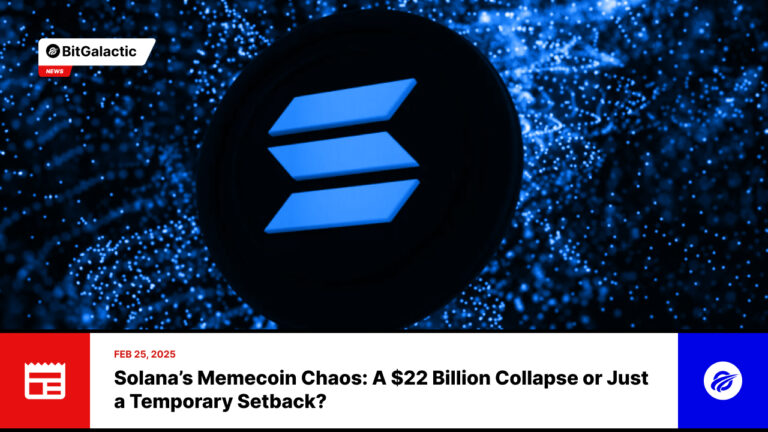Solana’s Memecoin Chaos: A $22 Billion Collapse or Just a Temporary Setback?
Solana’s rollercoaster ride in the crypto market seems far from over.
The blockchain’s native token, SOL, plunged another 9% on Monday, dipping below $153. This marks a staggering 37% decline over the past month—outpacing Ethereum’s 19% drop, according to CoinGecko. But what’s fueling this downturn? Ironically, the very thing that propelled Solana ahead of its competitors in 2024—memecoins.
From Strength to Liability
Solana’s rapid ascent in the crypto space was largely driven by its embrace of memecoins. The low transaction costs and high-speed transactions made it an ideal launchpad for speculative tokens, sparking comparisons to Ethereum. However, recent controversies have cast a shadow over this growth.
A series of high-profile memecoin launches have resulted in massive investor losses, shaking confidence in Solana’s ecosystem. One of the most infamous examples was the Libra memecoin, backed by Argentina’s crypto-friendly president, Javier Milei. The token collapsed shortly after insiders cashed out, triggering outrage across both Argentina and the wider crypto market.
And this wasn’t the first time Solana found itself at the center of a memecoin scandal. Back in January, both Donald Trump and Melania Trump launched memecoins on Solana, only for the tokens to skyrocket and then crash. Similarly, the viral Hawk Tuah meme-inspired token met the same fate. The common denominator? A system that allows for the unchecked proliferation of memecoins, leaving retail investors vulnerable to losses.
The Pump.fun Problem
A major contributor to this issue is Pump.fun, a Solana-based memecoin factory that simplifies token launches. On January 23, more than 75% of all new tokens on Solana originated from this platform, according to Solscan and Dune. While some argue that permissionless markets foster innovation, critics claim that Solana is enabling scams that ultimately erode trust in the network.
BitGalactic’s take? Solana’s reliance on memecoins is a double-edged sword. The short-term hype drives liquidity and user engagement, but the long-term risks could outweigh the benefits if regulatory scrutiny increases.
Can Solana Recover?
Despite the turmoil, some analysts remain optimistic about Solana’s future. Carlos Guzman from GSR points to potential growth areas, such as payments, DeFi, and AI-driven applications. He also highlights the possibility of a SOL ETF and clearer regulatory frameworks, which could restore investor confidence.
Solana developers are already taking action. Mert Mumtaz, CEO of Solana developer platform Helius, announced plans to hire a forensic researcher to curb fraudulent activity. Meanwhile, Coinbase CEO Brian Armstrong called for the industry to purge bad actors, acknowledging that some memecoins have gone too far.
BitGalactic believes that Solana must evolve beyond memecoin-driven hype. While speculation will always play a role in crypto, sustainable growth will require a more balanced ecosystem. If Solana can clean up its act, it may emerge stronger. But if reckless speculation continues unchecked, the network risks losing credibility.
The Bottom Line
Is this $22 billion memecoin wipeout a fatal blow to Solana or just another hurdle? The coming months will reveal whether Solana can turn the page on its memecoin mania and build a more resilient future. One thing is clear—if the blockchain doesn’t adapt, history may repeat itself.
Share this post


